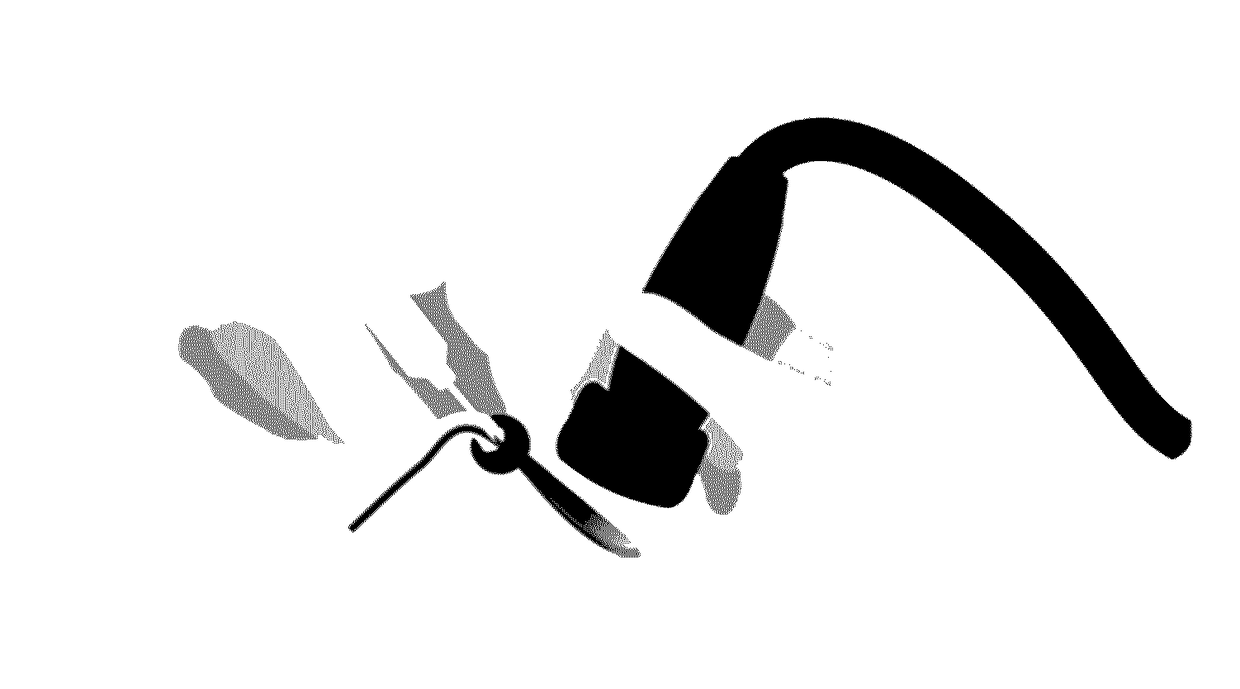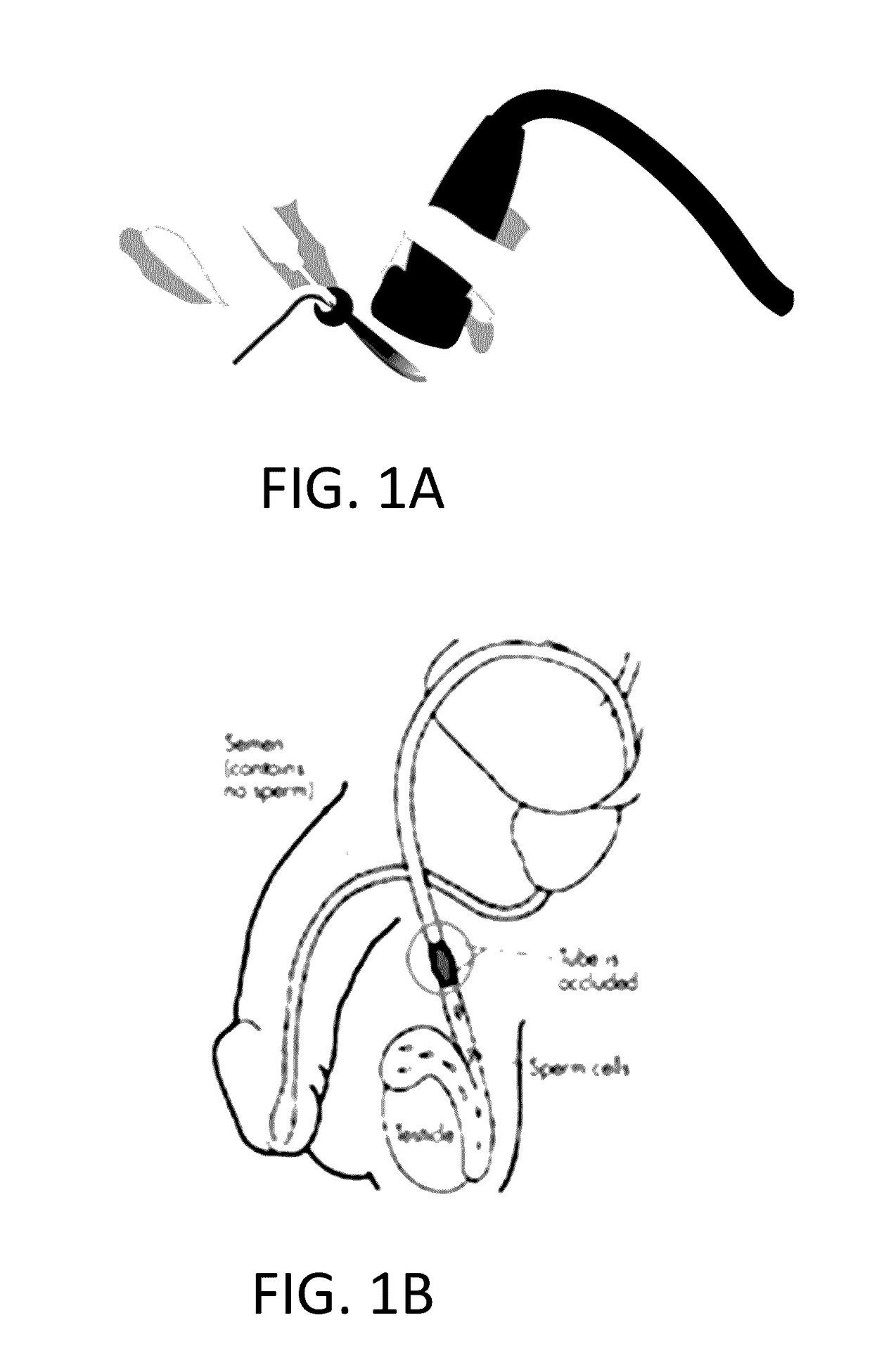Compositions and methods for vas-occlusive contraception
a vasoconstrictive and occlusive technology, applied in the field of urology, can solve the problems of inability to reverse the vasectomy, pain in patients, swelling or bruising,
- Summary
- Abstract
- Description
- Claims
- Application Information
AI Technical Summary
Benefits of technology
Problems solved by technology
Method used
Image
Examples
example 1
f the Human Vas Deferens with Ultrasound
[0297]Background:
[0298]The non-surgical procedure disclosed herein to inject the echogenic gel is novel and is significantly different from the no-scalpel vasectomy (the current gold standard) as well as the procedure used to administer RISUG and VASALGEL. To distinguish this minimally invasive procedure from the vasectomy or injection of other vas-occlusive contraceptives, this procedure from hereon in, is known as VASINTOMY™. In the no-scalpel vasectomy, the three-finger technique is used to locate the vas at which point a local anesthetic is injected into the scrotum and the vas. A small incision is made and the vas deferens is exteriorized. The sheath surrounding the vas is removed, and vas is ablated. After the ablation, the vas is placed back inside the scrotum. The procedure is performed on both sides. The injection of vas-occlusive contraceptives (RISUG, VASALGEL) is similar to the no-scalpel vasectomy, except for the injection of a ge...
example 2
d Imaging of Synthetic Vas Deferens
[0320]This experiment involved ultrasound imaging synthetic vas deferens (purchased from SynDaver Labs (Tampa, Fla.)), which are commonly used for practicing vasectomy and vasovasostomy procedures. The synthetic tissue has been validated to have similar mechanical properties to human vas tissue. Thus, the synthetic vas deferens makes for a good ex vivo model for the VASINTOMY™ procedure.
[0321]The synthetic vas deferens in FIG. 11 has an empty lumen while the synthetic vas deferens in FIG. 12 contains an EVOH 32-15% polymer gel implant. Both synthetic vas were held in place in Knox gelatin, which was formulated according to the manufacturer's recommendations for water: powder ratio. Each vas was imaged in “general” focus and “high” frequency settings using an EZONO 4000 ultrasound. In the longitudinal image of FIG. 11, the hollow lumen of the synthetic vas is clearly visible, while in the longitudinal image of FIG. 12, the lumen of the vas is filled...
example 3
f a Vas-Occlusive Polymer in Male Rats
[0324]This testing relates to the development of a polymer gel for injection into the vas deferens of male rats for use as a contraceptive. The product can be formulated for use in non-hormonal pet and human contraception applications. A polymer is dissolved in sulfoxide (DMSO). Once injected, the DMSO is absorbed by the epithelial lining of the vas deferens, resulting in precipitation of the polymer to form an occlusion. The gel formulation also contains microbubbles, which enhance the contrast of the gel and allow the contraceptive to be visible under ultrasound.
[0325]In embodiments, the product is a non-hormonal, ultrasound-imaginable contraception for male pets and humans. Rats can be used to collect baseline data on the effectiveness of the gel composition as a contraceptive. In such research, in vivo experiments should be used because an in vitro model cannot accurately replace the anatomy and physiology of a vas deferens by transporting a...
PUM
| Property | Measurement | Unit |
|---|---|---|
| weight percent | aaaaa | aaaaa |
| diameter | aaaaa | aaaaa |
| pore size | aaaaa | aaaaa |
Abstract
Description
Claims
Application Information
 Login to View More
Login to View More - R&D
- Intellectual Property
- Life Sciences
- Materials
- Tech Scout
- Unparalleled Data Quality
- Higher Quality Content
- 60% Fewer Hallucinations
Browse by: Latest US Patents, China's latest patents, Technical Efficacy Thesaurus, Application Domain, Technology Topic, Popular Technical Reports.
© 2025 PatSnap. All rights reserved.Legal|Privacy policy|Modern Slavery Act Transparency Statement|Sitemap|About US| Contact US: help@patsnap.com



